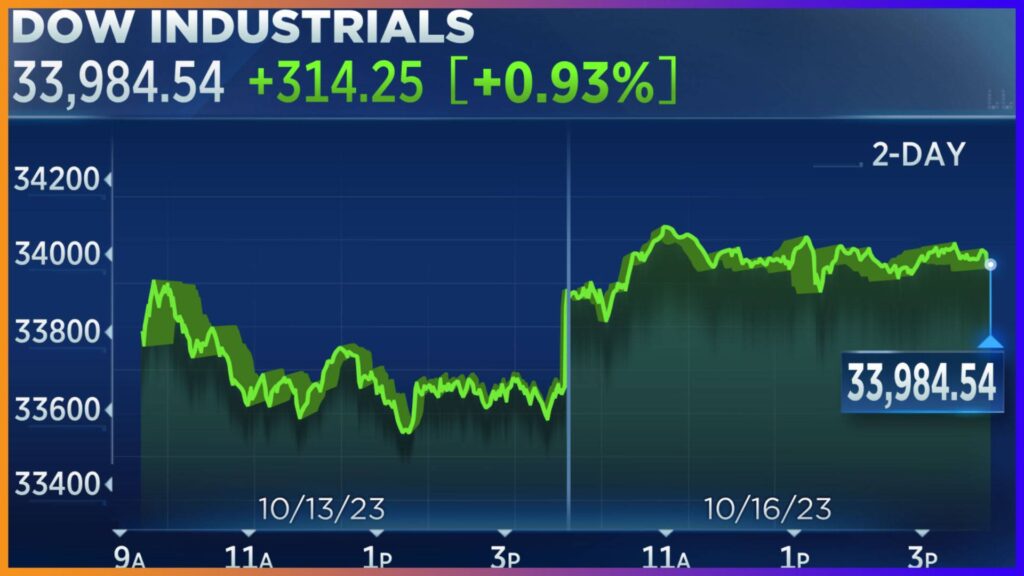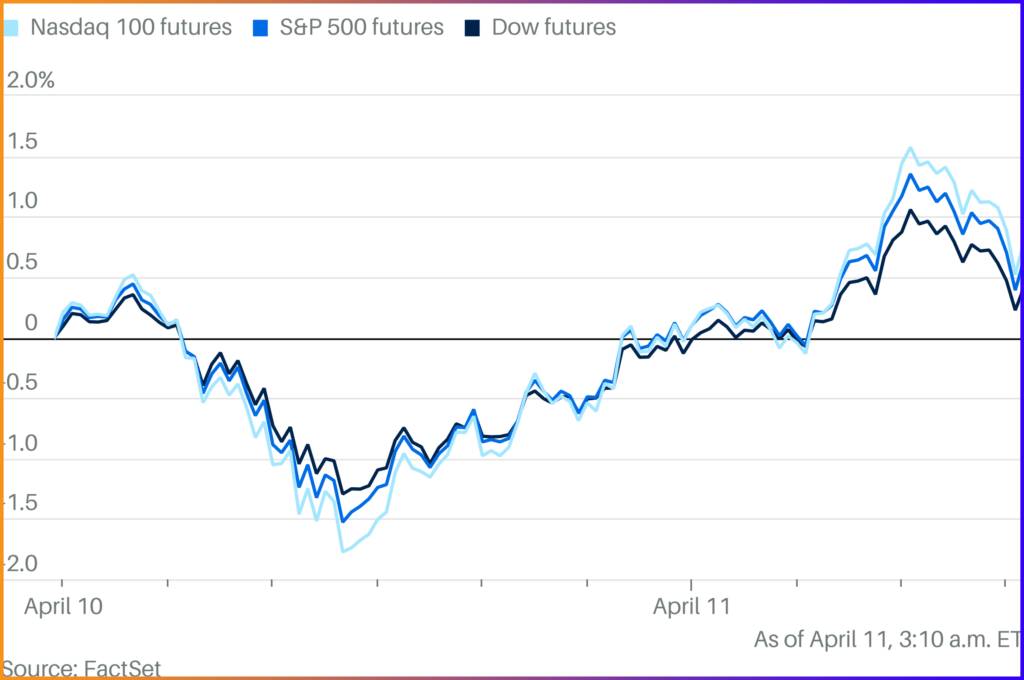Stay ahead with the latest analysis of Dow Jones Futures in 2025. Discover key market trends, economic indicators, Fed policies, and expert insights to guide your investment strategy.
The Dow Jones Industrial Average (DJIA), often referred to simply as the Dow, is a premier stock market index that reflects the performance of 30 prominent publicly traded companies in the United States. Serving as a barometer for the broader U.S. economy and investor sentiment, Dow Jones Futures provide valuable insights into how the market might perform in the near future.
Futures contracts, particularly for the DJIA, allow investors to speculate on the index’s future value. By analyzing DJIA futures, financial analysts and investors can make informed decisions about market entry, hedging strategies, and economic planning.
In 2023 and moving into 2025, Dow Jones Futures have been at the center of financial discussions, especially with the economic landscape experiencing high inflation, changing interest rates, and geopolitical turbulence. This article provides a deep dive into the current trends, the factors influencing DJIA futures, and what the future may hold for this essential market indicator.
Table of Contents
What Are Dow Jones Futures?
Dow Jones Futures are financial contracts that obligate the buyer to purchase, or the seller to sell, the DJIA index at a predetermined future date and price. These contracts are typically used by traders and institutional investors to:
- Hedge existing positions,
- Speculate on short-term movements, or
- Gauge market sentiment ahead of the regular stock market open.
Traded on platforms such as the Chicago Mercantile Exchange (CME), these futures contracts operate almost 24/7, providing a sneak peek into market activity before U.S. stock exchanges open.
The Importance of Dow Jones Futures
Dow Jones Futures are crucial for a number of reasons:
- Market Prediction: They help predict how the market will open.
- Hedging: Investors hedge their portfolios against expected downturns or upswings.
- Sentiment Indicator: Reflects overall investor confidence or concern.
- Liquidity & Flexibility: Offers a way to trade outside of traditional market hours.
They have become especially significant during uncertain times, acting as a compass for economic direction and helping shape global investment strategies.
Current Trends in Dow Jones Futures (Mid-October 2023 to Mid-2025)
1. Volatility Amidst Economic Uncertainty
As of mid-October 2023, Dow Jones Futures began showing signs of volatility. Key drivers included:
- Rising interest rates: The Federal Reserve’s stance on aggressive rate hikes to combat inflation.
- Inflation data: Higher-than-expected inflation reports alarmed investors.
- Earnings seasons: Disappointing Q3 earnings from major companies like JPMorgan Chase and Microsoft led to negative futures performance.
- Geopolitical events: Conflicts in Eastern Europe and the Middle East added to market fear.
However, a modest rebound was observed by October 13, 2023, suggesting investor optimism tied to upcoming economic indicators and fiscal policy announcements.
2. Positive Signals from the Labor Market
Unemployment data released in late October showed better-than-expected job growth, which added to investor confidence. This contributed to an uptick in Dow Futures, as employment levels are strongly tied to consumer spending and economic health.
3. Corporate Earnings and Sector Trends
Tech, healthcare, and consumer discretionary sectors have played a pivotal role. While big tech faced some slowdown, healthcare and utilities showed resilience, stabilizing futures contracts.
4. Federal Reserve Statements
Statements from Federal Reserve Chair Jerome Powell on adopting a “wait-and-see” approach regarding further rate hikes also contributed to stabilizing futures in early 2024. This reduced fears of an overcorrected economy entering a recession.
Key Factors Influencing Dow Jones Futures
1. Interest Rates and Fed Policy
The Federal Reserve’s monetary policy remains the single most significant influence on DJIA futures. When the Fed signals an increase in interest rates:
- Borrowing becomes more expensive,
- Corporate profits are impacted,
- Market sentiment turns cautious.
This leads to bearish Dow Futures. Conversely, signals of a rate pause or cut generally lead to bullish sentiment.
2. Inflation Trends
Inflation data is monitored closely. When inflation is high, it indicates decreased purchasing power and leads to:
- Rising input costs for companies,
- Higher prices for consumers,
- Negative investor sentiment.
As seen in 2023, persistent inflationary pressure weighed heavily on Dow Futures.
3. Corporate Earnings
Earnings seasons (usually quarterly) significantly affect the direction of futures. Companies like Apple, Coca-Cola, Boeing, and Goldman Sachs are among the 30 stocks in the DJIA. When these firms report weaker earnings, Dow Futures typically decline.
4. Geopolitical Events
The Russia-Ukraine war, Israel-Gaza conflict, and tensions between the U.S. and China have injected uncertainty into markets. These geopolitical situations can:
- Disrupt global supply chains,
- Affect energy prices,
- Trigger safe-haven movements (e.g., investments in gold or bonds over stocks).
5. Energy Prices
Crude oil and natural gas prices directly influence many companies in the Dow. As of late 2023, rising oil prices due to OPEC+ production cuts impacted transportation and manufacturing stocks, pressuring futures lower.
6. Economic Indicators
Important reports that influence futures include:
- Consumer Price Index (CPI)
- Producer Price Index (PPI)
- Gross Domestic Product (GDP) growth
- Consumer Confidence Index
- Retail Sales Data
Positive reports typically lead to rising Dow Futures, signaling economic expansion. Poor reports have the opposite effect.

Impact of Dow Jones Futures on Investor Behavior
1. Pre-Market Trading Decisions
Since futures trade before the market opens, they offer clues to the expected direction of the stock market at the opening bell. Traders use this data to adjust their strategies and portfolios accordingly.
2. Hedging and Risk Management
Institutional investors hedge using futures to protect themselves against sudden downturns. If they expect the DJIA to drop, they may short Dow Futures while holding long positions in stocks, balancing potential losses.
3. Psychological Impact
Sharp movements in Dow Futures can spark panic or euphoria. A large drop may cause retail investors to sell at market open, while a surge may lead to a buying spree.
Dow Jones Futures vs. S&P 500 and Nasdaq Futures
While DJIA Futures focus on 30 large-cap companies, S&P 500 Futures represent a broader cross-section of 500 companies, and Nasdaq Futures focus primarily on tech-heavy stocks.
| Feature | DJIA Futures | S&P 500 Futures | Nasdaq Futures |
|---|---|---|---|
| Composition | 30 companies | 500 companies | Tech-focused |
| Weighting | Price-weighted | Market cap-weighted | Market cap-weighted |
| Volatility | Moderate | Balanced | Higher |
| Sector Exposure | Diverse | Broader | Tech and growth-heavy |
Despite their differences, all three futures often move in tandem but with varying degrees of magnitude.

How to Trade Dow Jones Futures
1. Choose a Brokerage Platform
Traders need a futures-approved brokerage account (e.g., TD Ameritrade, Interactive Brokers, Charles Schwab).
2. Understand the Contract Specifications
- Symbol: YM (E-mini Dow)
- Tick Size: $5 per tick
- Contract Size: $5 x DJIA Index
- Trading Hours: Nearly 24/5 (Sunday night through Friday)
3. Develop a Strategy
Popular trading strategies include:
- Scalping: Making quick, small profits.
- Swing Trading: Holding for a few days or weeks.
- Hedging: Offsetting risk in other investments.
4. Use Technical and Fundamental Analysis
Dow Futures traders rely on:
- Moving Averages
- Fibonacci Retracements
- Support and Resistance Levels
- Earnings Reports
- Macroeconomic Data
Looking Ahead: The Future of Dow Jones Futures (2025 and Beyond)
1. AI and Automation Influence
Artificial intelligence is reshaping how futures are traded. Algorithmic trading and predictive models help investors make faster, data-driven decisions.
2. ESG and Green Energy
The global shift toward environmental, social, and governance (ESG) investing may change the makeup of companies in the DJIA, influencing future trends in the index and its futures.
3. Global Economic Recovery
As inflation normalizes and central banks stabilize their policies, Dow Futures may reflect a more optimistic economic outlook by late 2025.
4. Political Landscape
The 2024 U.S. Presidential election will play a pivotal role. Policy changes regarding taxes, trade, and tech regulation could cause futures market turbulence throughout 2025.
Conclusion
Dow Jones Futures remain an essential tool for understanding market sentiment and anticipating short-term movements in the U.S. stock market. While the current landscape in 2023–2025 shows signs of volatility driven by inflation, interest rates, and geopolitical events, there is also cautious optimism for a rebound.
Investors, traders, and policymakers must stay vigilant, tracking key economic indicators, Fed policy changes, and global events. As technology and financial strategies evolve, so too will the futures market—making it more dynamic and critical for successful investing in the 21st century.
